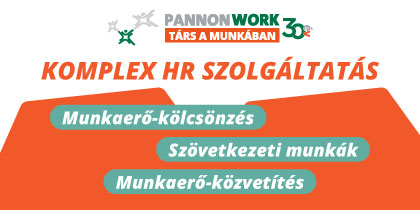New ILO report says HIV/AIDS epidemic costing more than 1 million new jobs per year
GENEVA (ILO News), Friday, 1 December 2006 - The relentless advance of HIV/AIDS is markedly reducing economic and employment growth in countries hit hardest by the epidemic, jeopardizing their efforts to reduce poverty, create new jobs, especially for youth, and fight child labour, says a new report by the International Labour Office (ILO) released today.
What's more, the report says the epidemic was causing a reduction in employment growth resulting in 1 million fewer jobs per year in the worst-hit countries, compared to what might have been in the absence of the HIV epidemic. The report presents a model which captures the impact of the HIV/AIDS epidemic on economic and employment growth in 43 countries with over 1 per cent HIV/AIDS prevalence for which sufficient data were available. This made it possible to arrive at an estimate of the annual cost to the global economy in terms of curtailed job growth.
The report concludes that:
- Among those of working age, in addition to the 24.6 million labour force participants living with HIV/AIDS, 11.7 million more persons who are engaged in some form of productive activity, often women in the home, are now living with the virus.
- Forty-three countries heavily affected by HIV/AIDS lost on average 0.5 percentage points in their rate of economic growth every year between 1992 and 2004 due to the epidemic, and as a result forfeited 0.3 percentage points in employment growth. Among them, 31 countries in sub-Saharan Africa lost 0.7 percentage points of their average annual rate of economic growth and forfeited 0.5 percentage points in employment growth. This produced a global employment shortfall of 1.3 million new jobs every year, of which 1.1 million were lost annually to sub-Saharan Africa.
- The impact of the epidemic is particularly severe for children and youth whose lives, hopes and future are blighted directly or indirectly by HIV/AIDS. Globally, nearly 2.3 million children live with AIDS and there are an estimated 15 million AIDS orphans. When children in worst-affected countries do reach working age they face a severe shortage of legitimate job opportunities.
- Unemployment for young people considered to be of working age is 2 to 3 times as high as for their adult counterparts. This puts young people at risk in terms of poverty but the report also highlights the increased risk of exposure to HIV of large numbers of unemployed youth in resource-poor settings. Consequently young people account for half of all new HIV infections. An estimated 5,000 to 6,000 young persons aged 15 to 24 years acquire HIV each day.
- In 2005, more than 3 million labour force participants worldwide were partially or fully unable to work because of illness due to AIDS, and three-quarters of them lived in sub-Saharan Africa.
- Globally 41 per cent of the labour force participants living with HIV are women, and in sub-Saharan Africa, the proportion is even higher at 43 per cent.
The report's focus on children and youth reflects the severe impact the epidemic is having on the future global labour force. Often the epidemic propels children into work too early because their parents are sick or have died and a means of income is needed. Child labour puts children at risk, robs them of education and can lead to work that makes them more vulnerable to acquiring the virus themselves. Yet a range of rights-based legal instruments have seen widespread ratification that would eliminate the worst forms of child labour if vigorously enforced, and limit access to underage children for purposes of work in order to keep them in compulsory education.
A rapid assessment study by the ILO in Zambia in 2002 estimated that HIV/AIDS increased the child labour force between 23 and 30 per cent. A survey in Uganda in 2004 found that over 95 per cent of children living in AIDS-affected households were engaged in some type of work. Sixteen per cent of the children working - mostly girls - worked both day and night. In addition, girls are more likely overall than boys to stay at home and look after ill parents or younger siblings, thereby foregoing education.
The new ILO report also found that girls face greater risks than boys of being sexually abused and acquiring HIV at their workplace, particularly through prostitution and other sexual exploitation.
A lack of opportunities for decent work can compel young women and men to work under precarious and un-regulated conditions. They are at increased risk from HIV when these conditions expose them to the virus. Studies often show that the majority of men and women who resorted to the sex industry for their livelihood began sex work in their teens or early 20s.
These factors interact with the result that, according to the most recent data, young people account for half of all new HIV infections. Moreover, the majority of young persons who are living with HIV do not know that they carry the virus, especially in resource-poor settings.
"Mortality losses to the labour force, illness and lack of access to antiretroviral treatment (ARVs) are jeopardizing the ability of worst affected countries to lift themselves out of poverty", the report said, adding that the future of the labour force is imperilled by the epidemic's severe impact on children, as it may force them into child labour and later constrain them from finding productive jobs when they reach the legal working age.
Noting that there had been some recent progress in remedying "woefully delayed" access to ARV treatments, the report also said there was a need for "forceful" new measures to increase access to ARVs and urged that the workplace be designated as a "major entry point2 for doing so.
Without increased access to ARVs, cumulative mortality losses to the global labour force are expected to continue to increase as a result of the impact of the HIV epidemic, from 28 million estimated for 2005 to 45 million projected by 2010, over 64 million projected for 2015, and nearly 86 million anticipated by 2020. However the report demonstrates that increased access to ARVs could have a significant impact on labour force losses. It shows that of the 17.3 million losses to the labour force expected to occur between 2005 and 2010 at the global level, at least 14 per cent would be averted by universal access to ARVs.
"Much can be gained from forceful expansion of access to ARVs, even when and where continuation rates tend to be at the low end of the expected range", the report said (continuation rates reflect the proportion of treated persons who stay with the treatment from one year to the next). "The prospect of averting between one fifth and one quarter of potential new losses to the labour force should serve as a powerful incentive to target the workplace as a major entry point to achieve universal access to ARVs."
The ILO is committed to long-term strategies for the elimination of child labour, the preparation for entry into the labour market of youth at the appropriate age, and the elaboration of national policies to reduce youth unemployment. In principle, the removal of children from child labour requires fostering alternative means to encourage the creation of jobs, increase labour productivity and raise wages for young people, as well as provision of alternative assistance to the current generation of children, enabling them to strengthen their work skills in the long run. Unemployed youth cannot replace child labour in many cases, but the potential to re-orient the demand for labour away from children and towards youth is a compelling priority that cries for attention and deserves thorough examination.
* * *
Note on methodology: The analyses summarized in the report were carried out with data from 60 countries in the world that are heavily affected by the HIV epidemic. They include 56 countries in which the HIV prevalence of persons aged 15 to 49 years was 1 per cent or higher, and four countries (Brazil, China, India and the United States) where HIV prevalence is lower, but because of the large size of their populations large numbers of persons, possibly a million or more, are HIV-positive. Of the 60 countries, data on 43 countries were available to estimate losses in economic and employment growth; of the remaining countries, 13 were small countries for which data were unavailable or unreliable. Of the four large countries with low HIV prevalence (Brazil, China, India and the United States), the impact on their economies was too small to be measurable. Of the 60 countries, data on 54 countries were available to estimate the labour force productivity gains in months and $US attributable to ARVs; of the remaining countries, all six were small countries for which data were unavailable or unreliable. As a result, the findings of both analyses describe the global situation, but yield conservative estimates. Persons of working-age are all persons aged 15 to 64 years in the main analyses. Labour force participants are persons aged 15 to 64 years who are in paid employment, gainful self-employment, or are unemployed but available and seeking work.
For more information, please contact the ILO Department of Communication, [email protected]. Tel.: +4122/799-7062, or see the ILO World AIDS Day site:
http://www.ilo.org/public/english/bureau/inf/event/aidsday06/index.htm
*/HIV/AIDS and work: global estimates, impact on children and youth, and response, 2006, ILO Geneva, ISBN 92-2-119070-6 and 978-92-2-119090-7.
- 2024.04.30NewLeadership – Vezetői eszköztár bővítése Önmaguk fejlesztését is fontosnak tartó középvezetőknek, frissen kinevezett döntéshozóknak szóló komplex és intenzív vezetőfejlesztő program sok gyakorlattal. Különlegessége, hogy a résztvevők átgondolhatják és megoszthatják egymással aktuális kihívásaikat és még a kritikus vezetői helyzetek megoldásáról is tanulhatnak egymás jó gyakorlatából is!
Részletek
Jegyek
- 2024.05.02Munkaviszony létesítése és megszűntetése – Dr. Berke Gyula Pannon Munkajogi Akadémia - Pannon Munkajogi Akadémia előadás-sorozatunkat, melyben kiváló és elismert szakmai előadók támogatásával ismerhetjük meg a munkajog különböző területeit, ajánljuk mindazoknak, akik szeretnék ismereteiket bővíteni, gyakorlati megközelítésben szeretnék az alkalmazott jogi hátteret megismerni.
Részletek
Jegyek
- 2024.05.09Egy jól működő csapat titka – Vezetői reziliencia fejlesztése A vezetői reziliencia fejlesztése képzésünk arra világít rá, hogyan lehet úgy tekinteni a tényekre, hogy relativizáljuk őket, kezelhető megvilágításba helyezzük a nehézségeket és igyekezzünk megőrizni a racionalitásunkat, hogy ebben a nehéz helyzetben is fejlődni tudjon a csapatunk. Segítve a csapattagoknak abban, hogy a problémalátásukat a megoldás keresés fókusza váltsa fel és megváltozzon az interakcióik minősége.
Részletek
Jegyek
- 2024.05.09Munkaidő, pihenőidő – Dr. Takács Gábor Pannon Munkajogi Akadémia - Pannon Munkajogi Akadémia előadás-sorozatunkat, melyben kiváló és elismert szakmai előadók támogatásával ismerhetjük meg a munkajog különböző területeit, ajánljuk mindazoknak, akik szeretnék ismereteiket bővíteni, gyakorlati megközelítésben szeretnék az alkalmazott jogi hátteret megismerni
Részletek
Jegyek
Április 25-én rendezi meg a Nők a Tudományban Egyesület (NaTE) a Lányok Napja elnevezésű programot, amelyre immáron 13. alkalommal várják a... Teljes cikk
Ma rendezik a hazai ellátási lánc szakma egyik legnagyobb, országos eseménysorozatát, a Logisztika Napját - tájékoztatta az MTI-t a a szervező Magyar... Teljes cikk
Jövőre újraindul a gazdasági növekedés: az idei 2,5 százalék után 2025-ben 4,1 százalékos bővülést várnak - mondta a nemzetgazdasági miniszter... Teljes cikk





 Balogh Levente: általában a kitűnő tanulókból lesznek a menedzserek, a 3-as 4-es tanulókból a vállalkozók
Balogh Levente: általában a kitűnő tanulókból lesznek a menedzserek, a 3-as 4-es tanulókból a vállalkozók